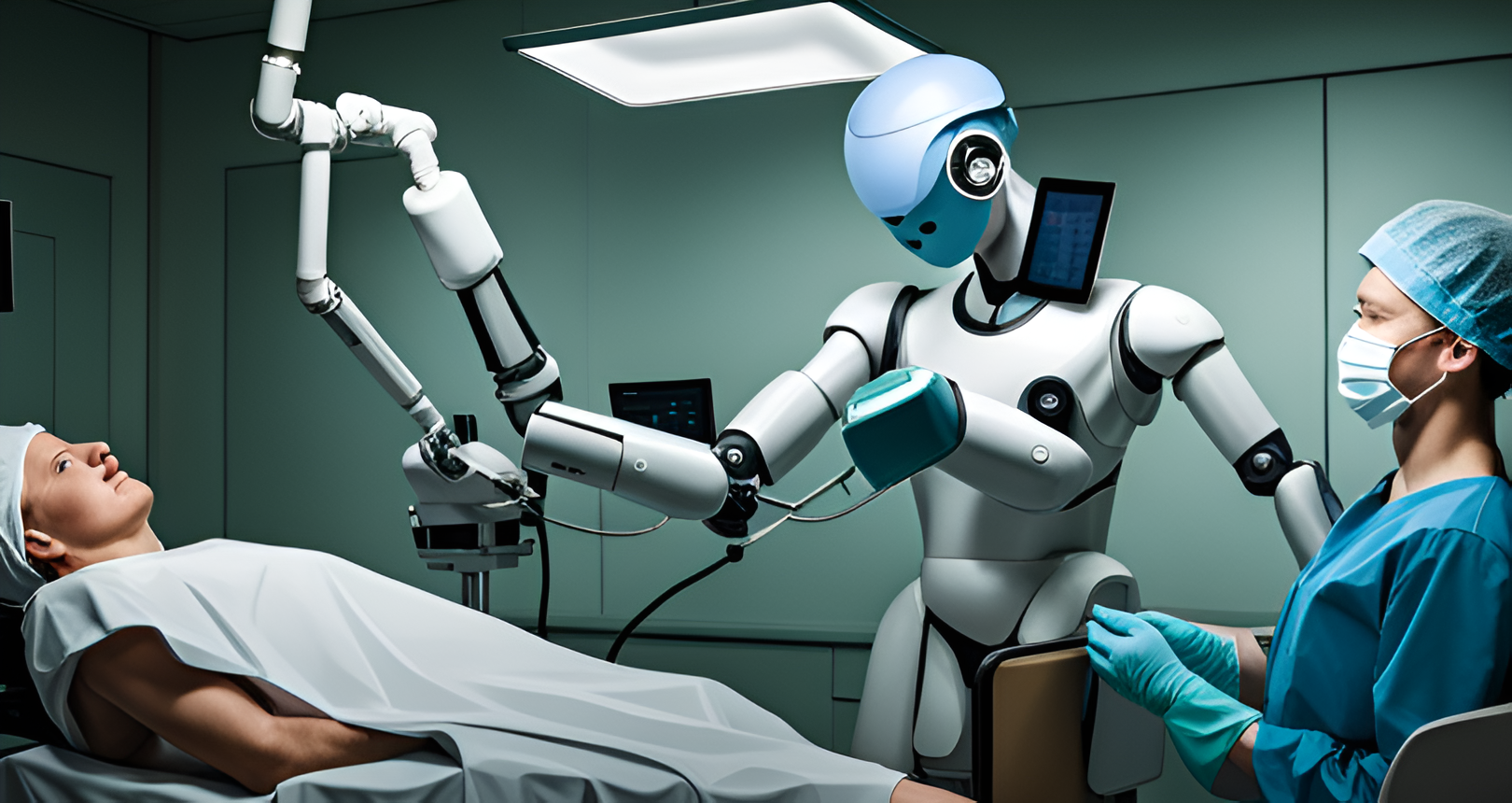Robotics and the Future of Healthcare: A Peek into the AI-Driven Medical World.


Introduction
Healthcare stands on the cusp of a robotics and artificial intelligence (AI) revolution, promising to redefine the way we diagnose, treat, and manage health conditions. The implications are far-reaching, ranging from greater precision in surgery to a newfound ability to predict, preempt, and personalize health interventions.
Historical Overview
The advent of robotics in healthcare dates back to the late 20th century, with the PUMA 560 robotic surgical arm’s successful brain biopsy in 1985. This was followed by the FDA approval of the da Vinci Surgical System in 2000, marking the dawn of a new era in surgical robotics.
AI, meanwhile, grew steadily, evolving from simple rule-based systems in the late 20th century to the complex machine learning models that underpin modern healthcare. Key breakthroughs include IBM’s Watson for Oncology in 2013, which opened doors to AI’s capabilities in diagnosing and treating diseases.
The Present State of Robotics and AI in Healthcare
Today, robotics and AI are ubiquitous in healthcare. Surgical robots like da Vinci allow for greater precision and less invasive procedures, improving patient outcomes. AI, with its prowess in handling big data, is instrumental in predicting disease outbreaks, creating personalized treatment plans, and even diagnosing conditions, in some cases matching or outperforming clinicians.
A case in point is Google’s DeepMind, which can diagnose eye diseases as accurately as human doctors, significantly reducing diagnosis time and increasing accessibility.
The Future of Healthcare: The Next Five Years
Looking forward, AI and robotics are set to transform healthcare even more profoundly. Robots are expected to take on more autonomous roles in surgery, diagnostics, and care. AI will be integral in health monitoring, with real-time data collection and analysis enabling proactive, personalized healthcare.
However, with these advancements come ethical and socio-economic challenges. The need for proper regulations will be paramount to ensure patient safety and data privacy. Balancing automation with human touch in healthcare will also be a significant challenge.
A Decade Ahead: The Future of Healthcare in 10 Years
By 2033, AI and robotics will likely be even more ingrained in healthcare. Robots could be ubiquitous in hospitals, performing complex surgeries, managing logistics, and providing patient care. AI could revolutionize diagnostics, therapy planning, and monitoring, making healthcare more efficient and personalized.
In the realm of mental health, AI could provide therapeutic interactions, aiding in early detection and treatment of conditions. However, the wide-scale adoption of these technologies will require overcoming hurdles like ensuring equitable access and managing the potential impact on the healthcare workforce.
Vision 2073: Healthcare in 50 Years
In fifty years, we could see a healthcare landscape radically transformed by robotics and AI. Nanorobots might perform surgery and drug delivery at the cellular level. AI could possibly predict a person’s health trajectory from birth, personalizing healthcare to an unprecedented degree.
Challenges will undoubtedly arise, from ethical issues around AI decision-making to policy considerations for ensuring equitable access to these advanced technologies. The need for a regulatory framework that fosters innovation while protecting patients will be ever more pressing.
Conclusion
The journey from the rudimentary healthcare robotics and AI of the past to the sophisticated systems of today highlights the potential of these technologies to reshape healthcare. The next five to fifty years promise even more groundbreaking changes, raising new possibilities, and challenges. Navigating this future will require continued research, careful regulation, and an unwavering commitment to prioritizing patient welfare above all.
References
- IBM. “Watson for Oncology.” IBM Watson Health.
- Intuitive Surgical. “The da Vinci Surgical System.”
- DeepMind Technologies Limited. “DeepMind AI for diagnosing eye diseases.”
- Fong, T., Nourbakhsh, I., and Dautenhahn, K. (2003). “A survey of socially interactive robots.” Robotics and autonomous systems, 42(3-4), 143-166.
- Jha, S., Topol, E.J. (2016). “Adapting to Artificial Intelligence: Radiologists and Pathologists as Information Specialists.” JAMA. 316(22):2353–2354.